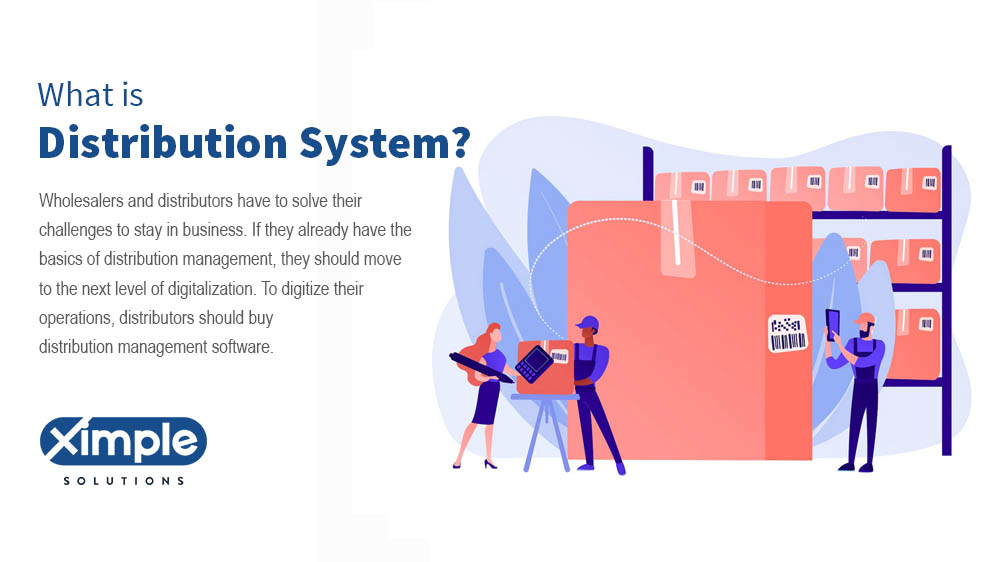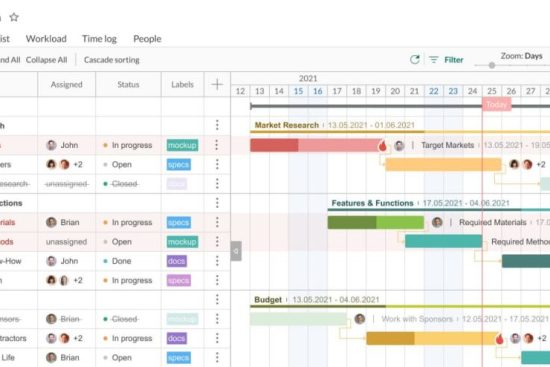
Sales and Distribution Management System, often called SDMS, is crucial for businesses. It streamlines sales processes and ensures products reach customers efficiently.
Every business needs a system to manage sales and distribution. With SDMS, companies can better track their sales activities, manage inventory, and meet customer needs effectively. This system not only improves efficiency but also helps in decision-making. It provides insights into sales trends, customer preferences, and inventory levels.
By using SDMS, businesses can reduce errors, save time, and increase profitability. Whether a small business or a large corporation, having a reliable sales and distribution management system is essential for success. This blog will explore why SDMS is important and how it benefits your business.
Introduction To Sales And Distribution Management
Sales and Distribution Management is critical for any business. It ensures products reach customers efficiently. Companies must manage sales and distribution well to succeed.
Importance In Business
Sales and Distribution Management plays a vital role in business growth. It influences how products move from manufacturers to customers. Efficient management leads to timely delivery, customer satisfaction, and increased profits.
Managing sales and distribution well reduces costs. Businesses can avoid delays and errors. This leads to higher efficiency and better customer service. Companies can also respond quickly to market changes. This agility is essential in today’s competitive market.
Key Objectives
The main objectives of Sales and Distribution Management are:
- Maximizing Sales: Ensure products are available to customers when needed.
- Reducing Costs: Optimize the supply chain to minimize expenses.
- Enhancing Customer Satisfaction: Deliver products on time and maintain quality.
- Improving Efficiency: Streamline processes to increase productivity.
Achieving these objectives requires a strategic approach. Companies need to plan and monitor each step carefully. Technology can help by providing data and insights. This allows businesses to make informed decisions and improve their operations.
Components Of Sales Management
Understanding the components of sales management is crucial for any business. These components help in structuring and guiding the sales process. They ensure that sales teams achieve their targets efficiently. Below are the key components of sales management.
Sales Planning
Sales planning is the first step in the sales management process. It involves setting sales goals and objectives. Planning helps in allocating resources effectively. It also ensures that sales strategies align with business goals. A well-thought-out plan can guide the sales team towards success.
Sales Forecasting
Sales forecasting predicts future sales based on past data. It helps businesses anticipate demand. Forecasting allows for better inventory management. It also helps in setting realistic sales targets. Accurate forecasts can lead to more effective sales strategies.
Sales Force Management
Sales force management focuses on managing the sales team. It includes hiring, training, and motivating sales personnel. Effective management ensures that the team performs at its best. It also involves monitoring sales activities and performance. A well-managed sales force can drive business growth.
Components Of Distribution Management
The effectiveness of a Sales And Distribution Management System relies heavily on its components. These components streamline the process and ensure that products reach customers efficiently. Below, we delve into three critical components of distribution management:
Inventory Management
Proper inventory management ensures that stock levels are optimal. It involves tracking the quantity of products available, forecasting demand, and managing restocking. An effective system prevents stockouts and overstock situations, ensuring a smooth supply chain.
| Task | Description |
|---|---|
| Stock Level Monitoring | Keep track of product quantities. |
| Demand Forecasting | Predict future sales to adjust inventory. |
| Restocking | Ensure timely replenishment of products. |
Order Processing
Order processing is crucial for timely deliveries. It involves receiving orders, verifying information, and processing payments. Efficient order processing improves customer satisfaction and reduces the chance of errors.
- Receive and validate order details.
- Process payments securely.
- Update inventory records post order.
Logistics
Effective logistics ensures products reach customers on time. This component includes transportation management, warehousing, and handling returns. A well-managed logistics system reduces costs and enhances delivery speed.
- Manage transportation routes and schedules.
- Ensure efficient warehousing and storage.
- Handle returns smoothly and promptly.
Technology In Sales And Distribution
Technology in sales and distribution has transformed how businesses operate. Advanced tools help streamline processes, improve customer relationships, and boost efficiency. This section explores key technologies that drive modern sales and distribution management systems.
Crm Software
Customer Relationship Management (CRM) software is crucial for managing customer interactions. It stores customer data, tracks sales activities, and helps maintain strong customer relationships. CRM software provides insights into customer behavior and preferences, making it easier to tailor sales strategies. It also helps in tracking leads, managing follow-ups, and closing deals efficiently.
Erp Systems
Enterprise Resource Planning (ERP) systems integrate various business processes into a single platform. These systems manage inventory, orders, and supply chain activities. ERP systems ensure that all departments can access real-time data, improving coordination and decision-making. They reduce manual errors and enhance productivity by automating routine tasks.
Automation Tools
Automation tools are essential for optimizing sales and distribution operations. They handle repetitive tasks like data entry, order processing, and inventory management. Automation tools save time and reduce the risk of human error. They also help in generating reports and analyzing data, providing valuable insights for strategic planning.
Strategies To Improve Efficiency
Improving efficiency in a Sales and Distribution Management System can boost your business. It ensures products reach customers faster and reduces costs. Here, we explore key strategies to enhance efficiency.
Process Optimization
Streamlining processes is crucial. Identify bottlenecks in your workflow. Simplify and automate repetitive tasks. Use technology to reduce manual work. This saves time and cuts down errors. Implementing efficient processes makes your system more agile.
Data-driven Decisions
Use data to guide your choices. Analyze sales and distribution data regularly. Understand customer behavior and market trends. Make informed decisions to improve performance. Data helps you predict demand. It also helps manage inventory better. This ensures stock levels are optimal.
Employee Training
Invest in your team’s skills. Regular training keeps them updated. Teach them to use new tools and technologies. A well-trained team works more efficiently. They can handle issues quickly and provide better service. Employee training is key to maintaining a smooth operation.

Credit: wperp.com
Measuring Performance
Measuring performance in a Sales and Distribution Management System is vital. It helps businesses track and analyze their progress. Effective performance measurement can drive better decision-making. It ensures that sales and distribution efforts align with company goals.
Key Performance Indicators
Key Performance Indicators (KPIs) are essential for tracking success. They provide measurable values to gauge the effectiveness of strategies. Common KPIs include sales growth, customer acquisition, and market share. These indicators help identify strengths and areas for improvement.
Sales Metrics
Sales metrics offer detailed insights into sales activities. Metrics like lead conversion rate and average transaction value are crucial. They help in understanding sales team performance. Tracking these metrics ensures that sales targets are met consistently.
Distribution Metrics
Distribution metrics focus on the efficiency of the supply chain. They include delivery time, order accuracy, and inventory turnover. Monitoring these metrics ensures that products reach customers on time. It also helps in maintaining optimal stock levels.
Challenges In Sales And Distribution
Sales and distribution management is an essential aspect of any business. However, it comes with its own set of challenges. Understanding these challenges can help businesses develop better strategies. Below, we will discuss some key challenges in sales and distribution.
Market Competition
Market competition is fierce in today’s business world. Many companies offer similar products and services. Standing out becomes difficult. Businesses need to find unique selling points. They must constantly innovate to stay ahead. Keeping up with competitors requires constant effort and vigilance.
Supply Chain Disruptions
Supply chain disruptions can severely impact sales. Natural disasters, political issues, or logistical problems can cause delays. These disruptions can lead to stock shortages. They can also increase costs. Businesses must have contingency plans. Being prepared can mitigate the impact of such disruptions.
Customer Expectations
Customer expectations are higher than ever. They demand fast and reliable service. They also expect high-quality products. Meeting these expectations is crucial for customer satisfaction. Businesses must stay updated with customer needs. Regular feedback and improvements are essential.

Credit: www.ximplesolution.com
Future Trends
The future of Sales and Distribution Management Systems is evolving rapidly. Companies are adopting advanced technologies to stay competitive. Let’s explore some key trends shaping the future of this field.
Ai And Machine Learning
AI and Machine Learning are transforming sales and distribution. These technologies analyze large data sets efficiently. They help predict customer behavior and optimize inventory levels. AI-driven chatbots enhance customer support. Machine learning models improve sales forecasting accuracy. This leads to better decision-making and resource allocation.
Omnichannel Distribution
Omnichannel distribution is becoming essential. Customers expect a seamless experience across all channels. Businesses integrate online and offline sales platforms. This ensures consistent service delivery. Real-time inventory management is crucial. It allows for faster order fulfillment. Omnichannel strategies improve customer satisfaction and loyalty.
Sustainable Practices
Sustainability is a growing concern. Companies are adopting eco-friendly practices. They aim to reduce their carbon footprint. Green logistics and sustainable packaging are now priorities. Using renewable energy sources is another focus. Sustainable practices appeal to environmentally conscious consumers. They also help in cost reduction in the long term.

Credit: www.salesbabu.com
Frequently Asked Questions
What Is A Sales And Distribution Management System?
A Sales and Distribution Management System is software that helps businesses manage sales processes and distribution channels efficiently.
Why Use A Sales And Distribution Management System?
Using this system improves accuracy, streamlines processes, and enhances customer satisfaction by effectively managing sales and distribution activities.
How Does This System Benefit Businesses?
It benefits businesses by automating tasks, reducing errors, and providing valuable insights into sales performance and distribution efficiency.
Can Small Businesses Use Sales And Distribution Management Systems?
Yes, small businesses can use these systems to manage their sales and distribution processes more effectively and efficiently.
Conclusion
A Sales and Distribution Management System streamlines business operations effectively. It ensures better inventory control and faster order processing. Businesses can track sales data easily and make informed decisions. This system supports customer satisfaction by reducing delivery times. Implementing it helps in boosting overall productivity.
Companies stay competitive in the market with these advanced tools. Adopting such a system is essential for modern business success. Simplify your sales and distribution processes today. Your business will benefit greatly from it.

